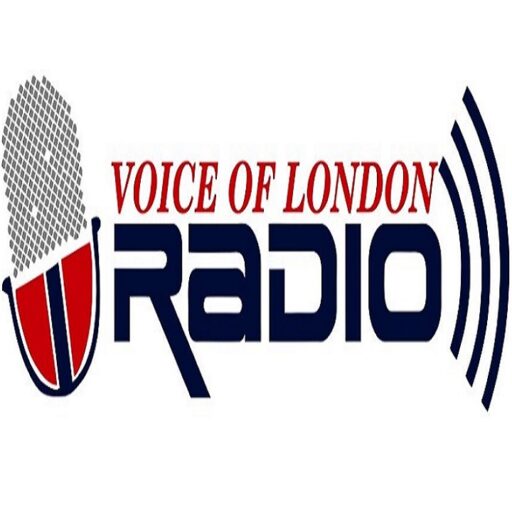As an African musician, your YouTube channel is more than just a platform for sharing music. It’s your stage, your brand, and often your livelihood. With the rise of digital music consumption across Africa, from Lagos to Nairobi, YouTube has become a vital tool for artists to connect with fans and build a global presence. But with that visibility comes risk. Hackers, scammers, and impersonators are always lurking, ready to exploit unprotected accounts. Setting up 2-step verification (also called two-factor authentication or 2FA) is a simple yet powerful way to protect your channel. This article explains why 2FA is critical for African musicians and walks you through the steps to set it up.
Why 2-Step Verification Matters for African Musicians
Your YouTube channel holds your creative work, fanbase, and often your revenue stream. Losing access to it can be devastating. Here’s why 2FA is non-negotiable:
- Protecting Your Brand and Income: African musicians like Burna Boy, Wizkid, and Tems have used YouTube to skyrocket their careers, but a hacked channel can ruin your reputation. Hackers might post unauthorized content, delete your videos, or steal your ad revenue. 2FA adds an extra layer of security, making it much harder for anyone to break in, even if they guess your password.
- Fighting Impersonation: The African music scene is vibrant, and fans are eager to follow their favorite artists. Scammers often create fake channels to mimic artists, misleading fans and damaging your credibility. A verified channel with 2FA ensures you’re the only one controlling your official presence, and it pairs well with YouTube’s verification badge to signal authenticity.
- Safeguarding Fan Trust: Your fans expect a safe and reliable experience. If your channel gets compromised, they might encounter spam or phishing links, eroding the trust you’ve built. For example, a hacked channel might post fake giveaways, a common tactic used to exploit fans in regions with high mobile penetration like Nigeria or Kenya.
- Meeting YouTube’s Requirements: If you’re part of the YouTube Partner Program to monetize your content, 2FA is mandatory. Without it, you risk losing access to monetization features, which can hit your income hard, especially in markets where every stream counts.
- Regional Challenges: Internet infrastructure in some African countries can be unstable, and public Wi-Fi or shared devices are common. These environments make accounts more vulnerable to hacking. 2FA ensures that even if someone gets your password from a compromised network, they can’t access your account without the second verification step.
How to Set Up 2-Step Verification on Your YouTube Channel
Setting up 2FA is straightforward and takes just a few minutes. Since YouTube uses your Google account for login, you’ll be securing your Google account, which protects your YouTube channel and other Google services. Here’s how to do it:
Step 1: Sign In to Your Google Account
Open a web browser and go to myaccount.google.com. Make sure you’re signed into the Google account linked to your YouTube channel. If you’re managing multiple channels (say, one for music videos and another for vlogs), double-check you’re using the right account.
Step 2: Navigate to Security Settings
On the left-hand menu, click on “Security.” Scroll down to the “How you sign in to Google” section. You’ll see an option for “2-Step Verification.” Click on it, then hit the blue “Get Started” button. Google might ask you to re-enter your password for security.
Step 3: Choose Your Verification Method
Google will ask for a phone number to send a verification code. This is critical for African musicians, as mobile phones are the primary internet access point for many. You can choose to receive the code via:
- Text Message: Ideal if you have a reliable mobile carrier. Most carriers in Africa, like MTN or Safaricom, support Google’s text-based codes.
- Voice Call: Useful if SMS delivery is spotty in your area (a common issue in some rural regions).
Enter your phone number, including the country code (e.g., +234 for Nigeria, +254 for Kenya). Click “Next,” and Google will send a code to your phone.
Step 4: Verify the Code
Once you receive the 6-digit code via text or call, enter it in the provided field. Double-check the digits to avoid errors. If you don’t get the code, click “Try Again” or switch to the voice call option. Some African carriers might have delays due to network issues, so give it a minute or two.
Step 5: Set Up Backup Options
Google will prompt you to add backup options in case you lose access to your phone (a real concern in areas with high phone theft rates). You can:
- Add a Backup Phone Number: Use a trusted friend or family member’s number, like a sibling in Accra or a manager in Johannesburg.
- Set Up Backup Codes: Google provides printable codes you can store securely (e.g., in a locked drawer at home). These are lifesavers if you’re in an area with no network coverage.
- Use an Authenticator App: Apps like Google Authenticator or Authy generate codes offline, perfect for regions with inconsistent internet. Download one from your app store and follow the setup prompts.
Step 6: Enable 2-Step Verification
After setting up your primary and backup methods, click “Turn On” to enable 2FA. From now on, whenever you sign into your YouTube account from a new device, you’ll need your password plus the second verification step (e.g., a code sent to your phone).
Tips for African Musicians Using 2FA
- Use a Dedicated Phone Number: If possible, get a separate SIM card for your YouTube account to avoid overloading your personal number. In countries like Ghana or South Africa, affordable prepaid SIMs are easy to get.
- Check Carrier Compatibility: Some smaller carriers in Africa might not support Google’s text or voice services. Test both options during setup, and if they fail, use an authenticator app instead.
- Secure Your Backup Codes: Write down your backup codes and store them in a safe place, not on your phone or computer. A small notebook or a locked box works well.
- Educate Your Team: If you have a manager or collaborators accessing your channel, ensure they understand 2FA and don’t share login details carelessly.
- Combine with Official Artist Channel Verification: For extra credibility, apply for an Official Artist Channel through a distributor like DistroKid or TuneCore. This requires at least three official music videos and complements 2FA by signaling your channel’s authenticity.
A Quick Note on Common Issues
Sometimes, 2FA setup can hit snags, especially in Africa’s diverse digital landscape. If you get an error saying your phone number is linked to too many accounts, use a different number (Google limits numbers to two channels per year). If texts don’t arrive, try a voice call or switch to an authenticator app. And if you’re in a low-signal area, plan ahead by downloading backup codes or setting up an authenticator app while you have internet access.
Why It’s Worth the Effort
Setting up 2FA might feel like a small chore, but it’s a game-changer for African musicians. It protects your creative work, keeps your fans safe, and ensures you can keep building your brand without fear of losing everything to a hacker. Take the example of a rising Afrobeat artist in Lagos who lost months of work when their channel was hacked last year. With 2FA, that could’ve been avoided. Spend a few minutes today to secure your channel, and you’ll thank yourself later.
Got questions or tips on securing your YouTube channel? Drop a comment below, and let’s keep the conversation going. Share this guide with other musicians to help them stay safe online!



